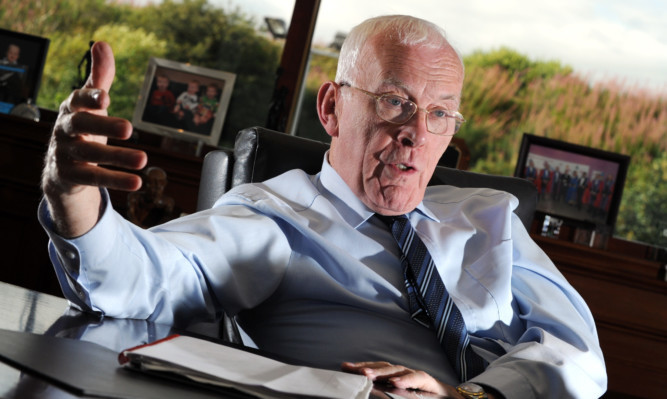The Treasury should consider a staggered regime of capital allowances for the oil industry that rise and fall in line with fluctuating oil prices, industry expert Sir Ian Wood has suggested.
Sir Ian, author of the Wood Report which advised government and industry on maximising recovery from the North Sea, said the current tax incentives are ineffective to encourage investment as there is currently little taxable activity going on.
The UK Government, the Oil & Gas Authority regulator and the industry must find more “imaginative ways to encourage people to invest”, he said.
Sir Ian proposed an incentive regime that tracks the price of oil, with bigger capital allowances when the price is low and lower allowances when the price is high.
He told the Press Association: “The oil price has come down a huge amount in the last month and there have been a couple of announcements from people looking to decommission earlier than they might.
“Maersk announced this week that they are stopping their Janice field probably two years early. There have also been further job losses.
“People don’t understand that the biggest loser by far in the current situation is UK plc and the government because fields will be decommissioned early, companies will leave the North Sea and we will not achieve maximum economic recovery.
“Six months ago people thought we would have a year to 18-month downturn and then begin to see the price coming back up again.
“We had a false dawn because the price was back up again at 65 US dollars (£42) a barrel six weeks ago, but it now looks like it’s down again and it looks like it’s going to stay down for a while.
“Against that background, the three parties need to get together and find ways in which we can incentivise investment from the present players, because they are not investing now.
“You can’t just reduce tax because people are not paying tax just now, so it’s about finding imaginative ways to encourage people to invest.
“You could significantly increase the level of capital allowances.
“If you spend £100 you possibly get tax allowances of maybe 50% of that, which means you get about 50% without paying tax.
“If you increase that to, say, 75% it would give an incentive to invest.
“You could also maybe find a clever way to incentivise as the price recovers by adjusting the rate of tax in line with the price of oil.
“The clever thing to do in the current environment, frankly, is to adjust the tax rate to the price of oil because at 100 US dollars (£64) one tax rate is clearly acceptable, but at 40 US dollars (£25) it has to be hugely less than that.
“Maybe there is some kind of clever formula that you can come up with which is fair to government and to operators and encourages investment.”
The Scottish Greens this week called for the UK oil industry to be nationalised to break its dependence on “distant multinationals and neoliberal forces”, and cut down on drilling.
Sir Ian said: “Nationalisation would be a huge risk. We don’t have the resources to do it.”
